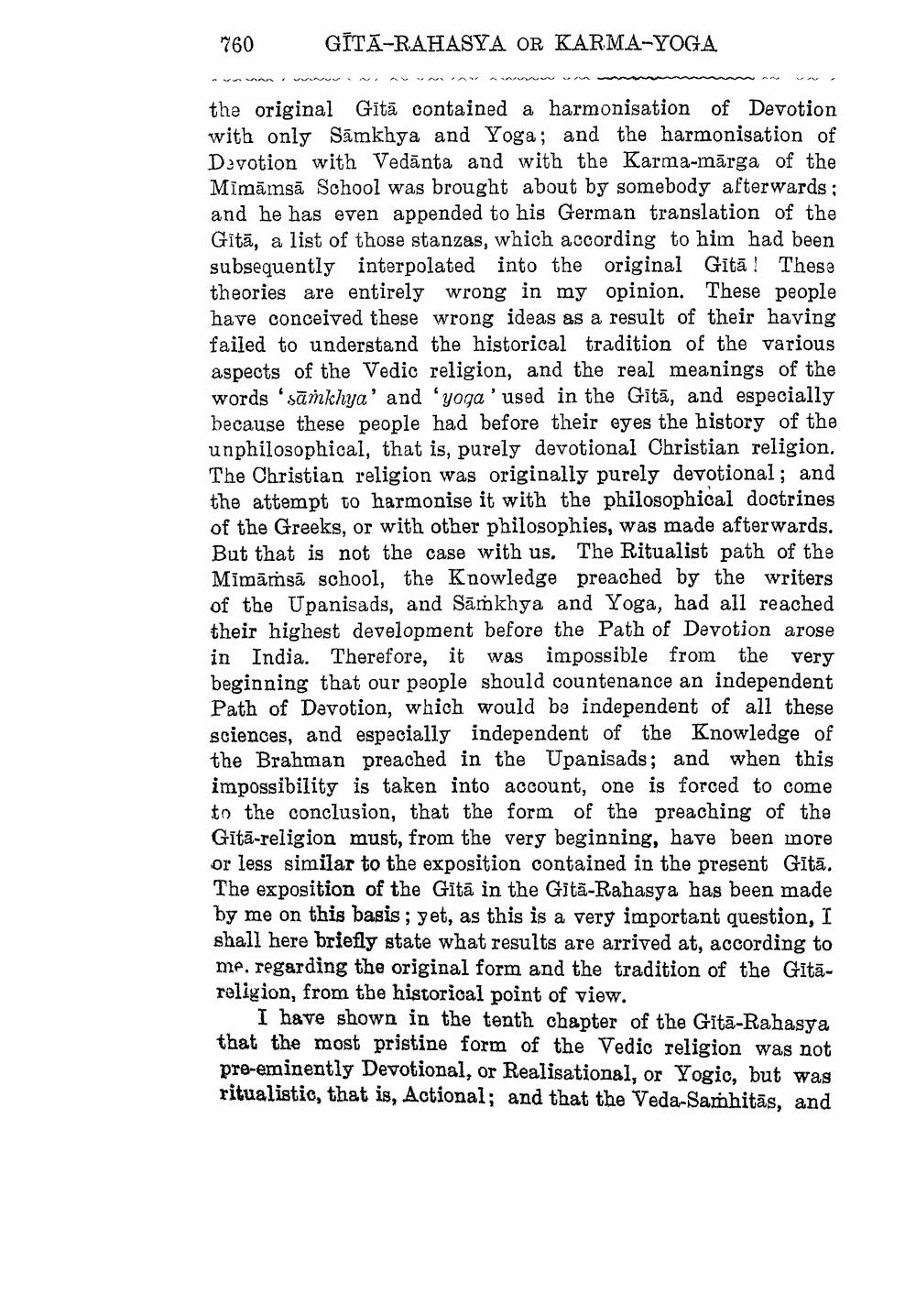________________
760
GĪTA-RAHASYA OR KARMA-YOGA
the original Gītā contained a harmonisation of Devotion with only Samkhya and Yoga; and the harmonisation of Devotion with Vedānta and with the Karma-mārga of the Mimāmsā School was brought about by somebody afterwards; and he has even appended to his German translation of the Gītā, a list of those stanzas, which according to him had been subsequently interpolated into the original Gītā! These theories are entirely wrong in my opinion. These people have conceived these wrong ideas as a result of their having failed to understand the historical tradition of the various aspects of the Vedic religion, and the real meanings of the words 'sāṁkhya' and 'yoga' used in the Gītā, and especially because these people had before their eyes the history of the unphilosophical, that is, purely devotional Christian religion, The Christian religion was originally purely devotional; and the attempt to harmonise it with the philosophical doctrines of the Greeks, or with other philosophies, was made afterwards. But that is not the case with us. The Ritualist path of the Mimāṁsā school, the Knowledge preached by the writers of the Upanisads, and Sāmkhya and Yoga, had all reached their highest development before the Path of Devotion arose in India. Therefore, it was impossible from the very beginning that our people should countenance an independent Path of Devotion, which would be independent of all these sciences, and especially independent of the Knowledge of the Brahman preached in the Upanisads; and when this impossibility is taken into account, one is forced to come to the conclusion, that the form of the preaching of the Gītā-religion must, from the very beginning, have been more or less similar to the exposition contained in the present Gītā. The exposition of the Gītā in the Gitā-Rahasya has been made by me on this basis; pet, as this is a very important question, I shall here briefly state what results are arrived at, according to me. regarding the original form and the tradition of the Gītāreligion, from the historical point of view.
I have shown in the tenth chapter of the Gitā-Rahasya that the most pristine form of the Vedic religion was not pre-eminently Devotional, or Realisational, or Yogic, but was ritualistic, that is, Actional; and that the Veda-Samhitās, and




